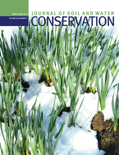
JOURNAL OF SOIL AND WATER CONSERVATION
Scope & Guideline
Exploring the nexus of soil health and water sustainability.
Introduction
Aims and Scopes
- Soil Health and Management:
Research focused on practices that enhance soil health, including the use of cover crops, organic amendments, and conservation tillage to improve soil structure, nutrient cycling, and microbial activity. - Water Conservation Techniques:
Studies evaluating methods for conserving water resources in agricultural systems, including irrigation practices, watershed management, and the application of constructed wetlands for nutrient reduction. - Ecosystem Services and Sustainability:
Exploration of the relationship between agricultural practices and ecosystem services, emphasizing the role of soil and water conservation in promoting biodiversity, carbon sequestration, and climate resilience. - Policy and Socioeconomic Factors:
Analysis of the socio-economic barriers and incentives affecting the adoption of conservation practices among farmers and landowners, as well as the implications of policy frameworks on conservation outcomes. - Innovative Technologies and Approaches:
Application of advanced technologies such as artificial intelligence, remote sensing, and ecological modeling to assess and improve soil and water conservation practices.
Trending and Emerging
- Artificial Intelligence and Data-Driven Approaches:
An increasing number of studies are leveraging AI and machine learning techniques for assessing soil properties and predicting changes in soil health, reflecting the growing importance of data analytics in environmental research. - Climate Change Resilience:
Research focused on the impacts of climate change on soil and water systems is gaining traction, with an emphasis on developing adaptive management strategies that enhance resilience in agricultural practices. - Integrated Watershed Management:
There is a growing emphasis on holistic watershed management approaches that consider the interdependencies between land use, water quality, and soil health, promoting sustainable practices at a landscape scale. - Socioeconomic Influences on Conservation Adoption:
Emerging themes highlight the importance of understanding the socio-economic factors that influence farmers' decisions to adopt conservation practices, emphasizing participatory research and stakeholder engagement. - Use of Cover Crops and Agroecological Practices:
An uptick in research supporting the use of cover crops and agroecological practices reflects a shift towards sustainable agricultural systems that prioritize soil health and ecosystem services.
Declining or Waning
- Traditional Soil Erosion Studies:
Research centered solely on traditional soil erosion mechanisms and processes is becoming less prominent as the journal shifts towards integrated approaches that consider broader ecological and hydrological contexts. - Conventional Tillage Practices:
There is a noticeable decrease in studies advocating conventional tillage methods, as the focus has increasingly moved towards no-till and conservation tillage practices that enhance soil health and minimize erosion. - Single-Factor Analyses:
The journal has seen a decline in studies that assess single environmental factors in isolation, favoring instead multi-factor analyses that consider the interconnectedness of soil, water, and ecosystem dynamics. - Localized Case Studies:
Research that is highly localized without broader implications or applications is becoming less common, as the journal emphasizes studies with wider relevance to multiple regions or global challenges. - Static Models of Soil and Water Interaction:
There is a waning interest in static models that do not account for the dynamic interactions between soil, water, and biological systems, with a shift towards more adaptive and integrated modeling approaches.
Similar Journals
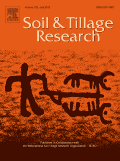
SOIL & TILLAGE RESEARCH
Exploring Innovations in Soil ManagementSOIL & TILLAGE RESEARCH is a premier international journal dedicated to advancing the understanding of soil science and tillage practices through high-quality research and insightful reviews. Published by Elsevier and based in the Netherlands, this esteemed journal boasts impressive impact metrics, being ranked in the Q1 category across multiple domains including Agronomy and Crop Science, Earth-Surface Processes, and Soil Science, reflecting its pivotal role in the academic community. With an H-Index that underscores its citation impact and a Scopus ranking placing it in the top percentiles of its field, SOIL & TILLAGE RESEARCH serves as a vital resource for researchers and professionals focusing on sustainable agricultural practices, soil management, and environmental conservation. This journal provides a platform for open dialogue and dissemination of knowledge that shapes future research directions and policy-making in land use and sustainable agriculture.

Soil and Water Research
Connecting Science and Solutions in Soil and Water ManagementSoil and Water Research, an esteemed journal published by the Czech Academy Agricultural Sciences, is dedicated to advancing the fields of Aquatic Science and Soil Science. With a strong commitment to open access since 2006, this journal facilitates the dissemination of high-quality research and fosters global collaboration among researchers, professionals, and students. Operating from the vibrant academic hub of Prague, Czech Republic, it serves as a key resource for those interested in pressing environmental and agricultural challenges. Featuring a robust H-index and ranking in the Q2 category for both Aquatic Science and Soil Science as of 2023, Soil and Water Research occupies a prominent position in Scopus, ensuring that published works reach a wide audience. The journal invites contributions that explore innovative methodologies and provide insights into soil and water management practices, thus playing a critical role in addressing sustainability issues within these interconnected domains. As researchers navigate the complexities of climate change and resource management, Soil and Water Research stands out as a vital tool for informed decision-making and impactful research.
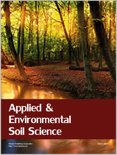
Applied and Environmental Soil Science
Advancing sustainable solutions for soil and environmental health.Applied and Environmental Soil Science, an esteemed journal published by HINDAWI LTD, focuses on disseminating high-quality research in the fields of soil science and environmental applications. With an ISSN of 1687-7667 and an E-ISSN of 1687-7675, this open-access journal has been a vital resource for the academic community since its inception in 2009. As of 2023, it holds a commendable position in the Q2 category for both Earth-Surface Processes and Soil Science, highlighting its impact in these crucial disciplines. The journal’s rankings further affirm its significance within the field, being placed 61st in Earth and Planetary Sciences and 58th in Agricultural and Biological Sciences. Researchers and practitioners alike benefit from the collaborative platform it offers for sharing innovative studies essential for sustainable soil management and environmental integrity. With a focus on advancing knowledge and fostering interdisciplinary dialogue, Applied and Environmental Soil Science stands as a crucial pillar for scholars and professionals dedicated to addressing the pressing challenges of soil and environmental health.
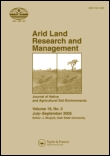
ARID LAND RESEARCH AND MANAGEMENT
Transforming arid landscapes through innovative research.ARID LAND RESEARCH AND MANAGEMENT is a leading journal in the field of Soil Science, published by Taylor & Francis Inc in the United Kingdom. With a focus on the sustainable management of arid and semi-arid lands, this journal aims to bridge the gap between scientific research and practical application. It garners a respectable impact factor, categorically positioned in the Q2 quartile within its field and ranks 59th out of 159 in Scopus, representing the top 63rd percentile of journals in Agricultural and Biological Sciences - Soil Science. As an essential resource for researchers, practitioners, and students alike, ARID LAND RESEARCH AND MANAGEMENT publishes high-quality, peer-reviewed articles that cover a wide range of topics, from soil conservation techniques to innovative land management practices. Open access options are available, facilitating broader dissemination of knowledge critical to addressing global challenges associated with arid environments. Targeting a pivotal area of study, this journal plays a significant role in advancing the understanding and management of these unique ecosystems, making it a valuable asset for anyone engaged in environmental sustainability.
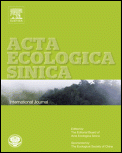
Acta Ecologica Sinica
Illuminating ecological challenges through rigorous research.Acta Ecologica Sinica, published by Elsevier, is a prominent journal in the field of ecology, with a strong focus on fostering understanding in ecological principles and their applications. Established in China, this journal holds an impressive Q2 categorization in both Ecology and Ecology, Evolution, Behavior and Systematics as of 2023, positioning it within the top tier of ecological research. With its Scopus rankings placing it in the 81st and 78th percentiles in relevant ecological domains, it serves as a vital platform for researchers and practitioners to disseminate findings that promote ecological sustainability. Although it operates under a traditional access model, its significant impact is underscored by its systematic convergence of key ecological inquiries across multiple years (2006-2008, 2014, 2017-2023). By engaging with the latest empirical studies, theoretical advancements, and methodological innovations, Acta Ecologica Sinica is indispensable for scholars dedicated to advancing ecological knowledge and addressing environmental challenges.
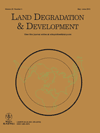
LAND DEGRADATION & DEVELOPMENT
Exploring the nexus of land health and human development.LAND DEGRADATION & DEVELOPMENT is a premier academic journal published by WILEY that has been at the forefront of research on the critical issues surrounding land degradation since its inception in 1989. With an impressive impact factor and ranked in the Q1 category across multiple fields including Development, Environmental Chemistry, Environmental Science, and Soil Science, this journal serves as an essential resource for scholars and professionals dedicated to sustainable land management and environmental conservation. Although it currently does not provide open access, its rigorous peer-review process ensures the publication of high-quality, impactful research that addresses vital environmental challenges. The journal aims to foster interdisciplinary collaboration, promote innovative solutions, and disseminate knowledge that not only informs policy but also empowers communities to combat land degradation effectively. Researchers, professionals, and students alike will find the insights and findings published in LAND DEGRADATION & DEVELOPMENT invaluable for advancing their understanding and practices within this critical field.
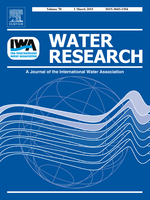
WATER RESEARCH
Pioneering research at the intersection of water and technology.WATER RESEARCH, published by Pergamon-Elsevier Science Ltd, is a premier international journal dedicated to the advancement of knowledge in the interdisciplinary field of water science and technology. With a significant impact factor, WATER RESEARCH holds a distinguished position, consistently ranking in the top quartile (Q1) across multiple categories including Civil and Structural Engineering, Environmental Engineering, and Pollution. Established in 1967 and set to continue its legacy until at least 2024, this journal provides a vital platform for researchers and professionals to disseminate cutting-edge findings related to water sustainability, quality, and management. Although the journal follows a traditional access model, its commitment to disseminating impactful research ensures that it remains an essential resource for academia and industry alike. With a rigorous selection process, the journal includes articles that significantly contribute to the understanding and resolution of global water-related challenges, making it an invaluable asset for researchers, students, and practitioners engaged in this critical area of study.

AGROFORESTRY SYSTEMS
Innovating agroforestry for a greener tomorrow.AGROFORESTRY SYSTEMS, published by Springer, is a leading journal in the fields of Agronomy and Crop Science and Forestry. With an impressive impact factor and prestigious rankings—Q2 in Agronomy and Crop Science and Q1 in Forestry as of 2023—this journal occupies a vital niche in publishing high-quality research that intersects agricultural practices and forest management. The journal aims to advance the understanding of agroforestry practices, promoting sustainable land use and enhancing ecosystems worldwide. Operating since 1982, AGROFORESTRY SYSTEMS stands out with its rigorous peer-review process, ensuring the dissemination of significant scientific findings that contribute to both theoretical insights and practical applications. Although it does not currently offer open access, the journal continues to be accessible through various academic platforms, supporting researchers, professionals, and students in their pursuit of knowledge within this dynamic field.

Revista Agrogeoambiental
Empowering Agricultural Innovation for a Greener FutureRevista Agrogeoambiental is a prestigious open-access academic journal dedicated to the field of agricultural and environmental sciences. Published by INST FEDERAL SUL MINAS GERAIS-I FSULDEMINAS since 2009, this journal stands as a vital forum for the dissemination of research findings, innovative methodologies, and interdisciplinary studies that address critical issues in agriculture and environmental sustainability. With a focus on promoting knowledge exchange among researchers, practitioners, and educators, Revista Agrogeoambiental seeks to enhance understanding of agroecological systems and their interaction with geospatial frameworks. As an open-access journal, it ensures that cutting-edge research is accessible to a wide audience, thereby fostering collaboration and knowledge-sharing in the global academic community. Researchers and professionals can benefit from the journal's commitment to high standards of scholarship, as well as its role in shaping policy and practice within the agricultural and environmental sectors.
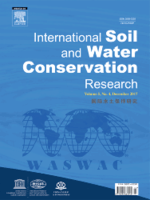
International Soil and Water Conservation Research
Leading the charge in global conservation research.International Soil and Water Conservation Research is a premier, peer-reviewed academic journal dedicated to advancing the field of soil and water conservation. Published by KEAI PUBLISHING LTD in China, this Open Access journal has established itself as a vital resource since its inception in 2013, offering researchers and practitioners an unparalleled platform for sharing innovative research and methodologies. With its impressive impact factor and recognition as a Q1 category journal in Agronomy, Water Science, Nature and Landscape Conservation, and Soil Science, it ranks among the top journals in its field, as evidenced by its high Scopus ranks—with ranks such as #10 in Soil Science and #12 in Nature and Landscape Conservation. The journal is committed to not only enhancing the scientific community's understanding of conservation practices but also addressing global challenges related to sustainable land and water resource management. By fostering interdisciplinary collaboration, International Soil and Water Conservation Research serves as an essential reference point for scholars, professionals, and students aiming to contribute to sustainable practices and policies in the context of agriculture and environmental management.